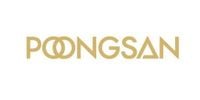Investors watching the South Korean stock market this week saw a notable performance from Hyundai Motor, as its stock price climbed steadily over two consecutive trading sessions, outpacing its industry peers and attracting attention for its robust trading activity and foreign investor interest.
According to data reported by Job Post, Hyundai Motor closed at 120,000 won on October 20, 2025, at the Korea Exchange (KRX), marking a 3,000 won increase, or a 2.56% rise, from the previous closing price of 117,000 won. The stock opened the day at 118,600 won, touched a high of 120,600 won, and dipped to a low of 118,200 won. The trading range for the day spanned 2,400 won, a sign of active market engagement.
Trading volume on October 20 was substantial, with a total of 2,122,120 shares changing hands and a trading value reaching 253.43 billion won. This level of activity underscored investors’ keen interest in the company, which, by the session’s end, boasted a market capitalization of 3.629 trillion won, making it the 131st largest listed company on the KOSPI index.
Hyundai Motor’s price-to-earnings ratio (PER) stood at 17.37 times, a figure that is notably lower than the industry average PER of 39.18 times. This lower PER could be interpreted as the stock being undervalued relative to its peers, potentially offering an attractive entry point for value-oriented investors. The dividend yield for the company was reported at 0.40%, providing a modest income stream to shareholders. Furthermore, foreign investors held 21.21% of Hyundai Motor’s shares, while institutional investors accounted for a 2.17% stake.
On the following morning, October 21, 2025, Hyundai Motor’s upward momentum continued. As reported by JoongAng Economy News, at 9:24 AM, the stock had risen further to 121,300 won, an increase of 1,300 won or 1.08% from the previous close. The day’s trading began at 121,300 won, reached a high of 122,000 won, and touched a low of 120,500 won, with a price fluctuation of 1,500 won.
Trading remained brisk, with 2,682,300 shares traded and the trading value amounting to 325.3 billion won. Hyundai Motor’s market capitalization inched up to 3.993 trillion won, maintaining its 131st position on the KOSPI leaderboard. The PER also nudged higher to 17.55 times, still comfortably below the updated industry average of 39.33 times, reinforcing the narrative of relative undervaluation.
The dividend yield showed a slight decrease, coming in at 0.23% on October 21. Foreign investors’ participation remained strong, with a holding rate of 21.23%. Out of a total of 28,024,278 outstanding shares, foreign investors owned 5,949,995 shares, reflecting sustained overseas confidence in Hyundai Motor’s prospects.
Both days saw Hyundai Motor outperforming the broader industry. On October 20, the average price movement for the sector was a 0.40% gain, yet Hyundai Motor’s rise was more than six times that. The following morning, the industry average climbed just 0.23%, while Hyundai Motor’s stock advanced by 1.08%. Such outperformance can often draw further attention from momentum investors and market watchers looking for signs of leadership within the sector.
So, what’s behind this surge in Hyundai Motor’s stock price? While the news reports did not cite specific corporate developments or earnings releases, the data points to a combination of factors. The relatively low PER compared to sector peers suggests that investors may be recognizing value in the stock, especially as the company continues to maintain a solid dividend and attract significant foreign investment. The high trading volumes and consistent gains indicate that both retail and institutional investors are actively repositioning in anticipation of further upside or in response to broader market trends.
Foreign investor involvement is particularly noteworthy. At over 21% of shares held, overseas funds are demonstrating considerable faith in Hyundai Motor’s long-term prospects. This level of foreign participation is often seen as a vote of confidence, not only in the company’s fundamentals but also in the stability and growth potential of the South Korean automotive sector as a whole.
Market analysts often look at PER as a key valuation metric. A lower PER, especially when compared to the industry average, can signal that a stock is undervalued or that the market has not fully recognized its growth potential. Conversely, it could also reflect investor caution regarding future earnings. In Hyundai Motor’s case, the consistent outperformance relative to its peers suggests that the market may be starting to re-rate the stock upward, closing the gap with the industry average.
Dividend yield, while not the main attraction here, remains an important consideration for many investors. Although the yield dipped slightly from 0.40% to 0.23% between the two sessions, Hyundai Motor’s steady payout policy provides a measure of income stability, which can be particularly appealing in uncertain market environments.
The stock’s volatility, as indicated by the daily trading ranges, also points to heightened investor activity. A 2,400 won swing on October 20 followed by a 1,500 won range on October 21 suggests that traders are actively seeking opportunities within the stock, possibly in response to broader market cues or sector rotation strategies.
For Hyundai Motor, maintaining a high market capitalization ranking on the KOSPI is no small feat, especially amid fierce competition from both domestic and international automakers. The company’s ability to attract and retain foreign investment, deliver consistent trading volume, and outperform its sector benchmarks speaks to the strength of its brand and the confidence investors have in its future.
As the trading week progresses, all eyes will be on whether Hyundai Motor can sustain this momentum and continue to outpace its industry rivals. Investors and analysts alike will be watching for any new developments, earnings reports, or strategic announcements that could further influence the stock’s trajectory. For now, Hyundai Motor’s recent performance stands as a testament to its enduring appeal and the dynamic nature of South Korea’s equity markets.
With a combination of strong trading activity, foreign investor interest, and a valuation that remains attractive relative to peers, Hyundai Motor has managed to capture the spotlight in a competitive market. As always, the coming days will reveal whether this rally is the start of a longer-term trend or simply a short-term burst of enthusiasm.




